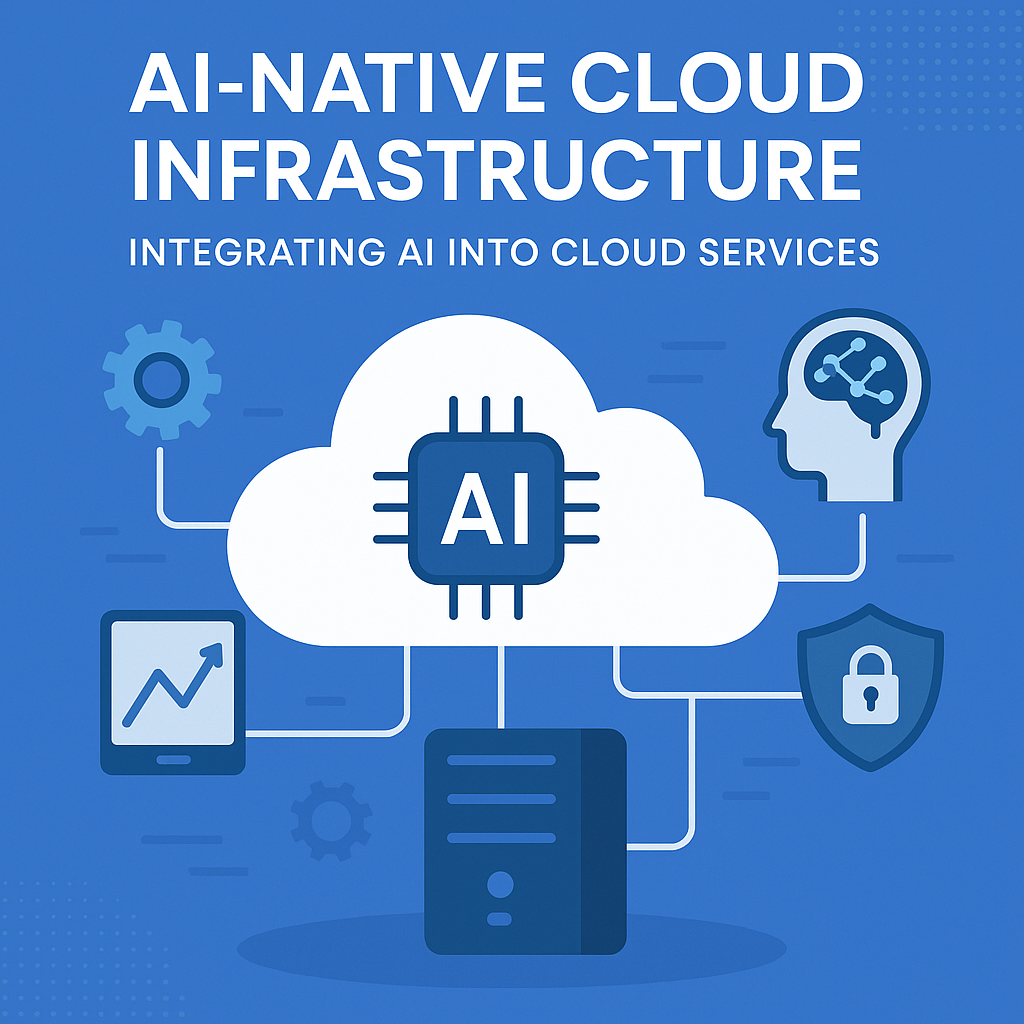
As artificial intelligence (AI) rapidly matures from experimental use cases to core business functions, a significant evolution is happening beneath the surface: the rise of AI-native cloud infrastructure. Unlike traditional cloud environments where AI is an added layer, AI-native clouds are purpose-built to embed intelligence into the very foundation of computing, networking, and storage.
This blog explores what it means to have an AI-native cloud, how it’s transforming enterprise IT, and why businesses must adapt to this paradigm shift.
What Is AI-Native Cloud Infrastructure?
AI-native cloud infrastructure refers to cloud systems that are built or optimized specifically to support and enhance AI workloads at scale. This is different from traditional cloud services that “support AI” through external services or APIs. In contrast, AI-native clouds integrate AI across the stack—from hardware acceleration to orchestration layers, all the way up to platform services.
Core Characteristics:
- AI as a Core Design Principle
Infrastructure is designed with machine learning (ML) training and inference in mind—not as an afterthought. - Hardware-Optimized for AI
GPUs, TPUs, NPUs, and custom AI chips are tightly integrated into compute offerings. - Intelligent Automation at Every Layer
Resource provisioning, autoscaling, cost optimization, security, and observability use AI for decision-making. - Seamless Integration with MLOps Pipelines
The infrastructure supports rapid data ingestion, model training, deployment, and monitoring with built-in tools.
Why AI-Native Infrastructure Matters
As the demand for AI applications grows, traditional cloud architectures often struggle with:
- Latency in data movement
- Insufficient GPU allocation
- Manual model deployment
- Fragmented monitoring and security
An AI-native cloud solves these problems by integrating intelligence at the infrastructure level. This allows for smarter resource usage, faster time to market, and more secure, scalable AI deployments.
Key Components of AI-Native Cloud Infrastructure
1. AI-Optimized Compute and Storage
- GPU & TPU Clusters: Automatically provisioned for high-intensity ML training tasks.
- Elastic AI Clusters: Auto-scalable environments that expand and shrink based on model size and training requirements.
- High-performance Storage: Designed for massive parallelism, low-latency data access, and support for distributed training.
2. Integrated MLOps Toolchain
AI-native infrastructure often includes native services for:
- Data labeling and versioning
- Experiment tracking
- Model registry
- CI/CD pipelines for AI
- Drift detection and model retraining automation
By embedding these into the platform, developers can focus more on experimentation and innovation, rather than stitching tools together.
3. AI-Driven Operations (AIOps)
AI is not just a workload but also a manager of the infrastructure:
- Predictive autoscaling: Based on ML patterns of usage, not just CPU/memory metrics.
- Anomaly detection: In logs, metrics, and user behavior.
- Intelligent cost management: AI-powered recommendations for underutilized resources and optimal pricing models.
4. Security Enhanced by AI
AI-native clouds leverage ML for:
- Real-time threat detection
- Behavioral analytics for user access
- Adaptive security policies that evolve based on system usage
Benefits of AI-Native Cloud Infrastructure
| Benefit | Description |
| Performance | Accelerated model training, reduced inference latency |
| Scalability | Elastic GPU/TPU provisioning for large models and datasets |
| Cost Efficiency | Smarter resource usage and AI-led autoscaling |
| Speed to Market | End-to-end MLOps integration reduces time from prototype to production |
| Resilience & Security | Self-healing systems and real-time security insights |
Real-World Use Cases
1. Healthcare
Hospitals using AI-native cloud platforms can process imaging data in real time, run diagnostic models, and retrain algorithms as new data is collected—all within a secure, HIPAA-compliant environment.
2. Finance
AI-native infrastructure allows for fraud detection systems that analyze millions of transactions in milliseconds, using models that are continually updated with the latest fraud patterns.
3. Retail
Personalization engines, inventory prediction, and real-time pricing models are deployed faster and perform better when hosted on AI-optimized infrastructure.
How to Transition to an AI-Native Cloud
1. Assess Current Workloads
Start by identifying workloads with high AI/ML demands or growth potential.
2. Evaluate Cloud Providers
Choose platforms with native support for:
- AI accelerators (e.g., NVIDIA A100, Google TPUs)
- Prebuilt MLOps pipelines
- AI-driven observability and security
3. Adopt Containerization and Kubernetes
AI-native clouds often use Kubernetes as the backbone for workload orchestration. Tools like Kubeflow or Vertex AI (Google) streamline ML workflows.
4. Build a Unified Data Platform
Consolidate data lakes, warehouses, and real-time data streams into a single accessible architecture to support large-scale AI models.
Leading Providers and Tools in AI-Native Cloud
| Provider | Key AI-Native Features |
| Google Cloud | Vertex AI, TPU Pods, AutoML, AI-powered operations |
| AWS | SageMaker, Inferentia chips, Bedrock for generative AI |
| Azure | Azure ML, AI Search, Synapse Analytics |
| NVIDIA DGX Cloud | Fully-managed AI supercomputing platform |
Final Thoughts
AI-native cloud infrastructure is more than a buzzword—it’s a fundamental reimagining of how computing environments should be built in an AI-first world. For developers, data scientists, and enterprises, this shift enables:
- Faster innovation
- Seamless AI lifecycle management
- Scalable, secure, and intelligent cloud operations
Businesses that embrace AI-native cloud platforms today will not only supercharge their AI capabilities but also build a resilient, future-ready tech foundation.
Ready to transform your cloud strategy?
Start by evaluating how deeply your current infrastructure supports AI, and explore platforms that treat AI not just as a workload—but as a foundational pillar.

